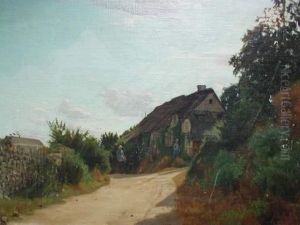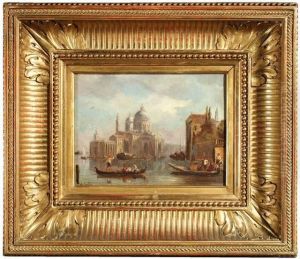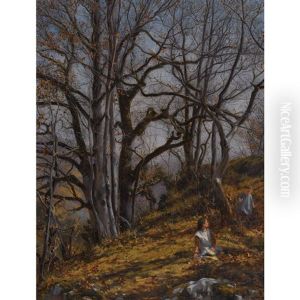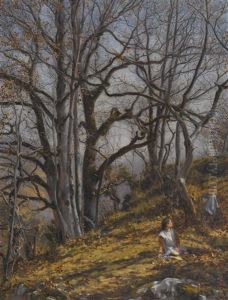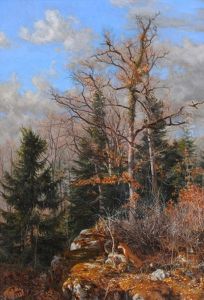Pierre De Salis-Soglio Paintings
Pierre de Salis-Soglio was a Swiss painter, known for his landscape and portrait paintings, born in 1811 into the distinguished de Salis family, which had roots in Grisons, Switzerland, and connections across Europe. His full name, reflecting his noble lineage, was Johann Gaudenzio Felix Ludwig Pierre de Salis-Soglio, and he was often recognized for blending his aristocratic heritage with his artistic pursuits. Despite the potential for a career in diplomacy or politics, de Salis-Soglio was drawn to the arts from a young age, a passion that would define his life's work.
De Salis-Soglio's education and early career were marked by extensive travel, which was typical for members of the European nobility at the time. He studied art in various European capitals, including Rome, where he was significantly influenced by the Italian masters, and Paris, where the vibrant art scene of the 19th century left a lasting impact on his style and technique. His works often depicted the landscapes of Switzerland and Italy, imbued with a romantic sensibility and a keen attention to detail that captured the sublime beauty of nature.
Throughout his career, de Salis-Soglio exhibited his works in numerous galleries and salons across Europe, earning accolades for his landscape paintings and portraits. His portraits, in particular, were noted for their depth of character and sensitivity to the sitter's personality, a skill that made him sought after by the European elite. Despite his success, de Salis-Soglio remained deeply connected to his Swiss roots, often returning to his family's ancestral lands to paint the Alpine landscapes that inspired much of his work.
Pierre de Salis-Soglio passed away in 1889, leaving behind a legacy as one of Switzerland's notable 19th-century artists. His contributions to landscape and portrait painting continue to be celebrated for their artistic merit and for the unique perspective they provide on the European landscape and society during his lifetime. His works are preserved in various museums and private collections, where they continue to be appreciated for their beauty and historical value.
